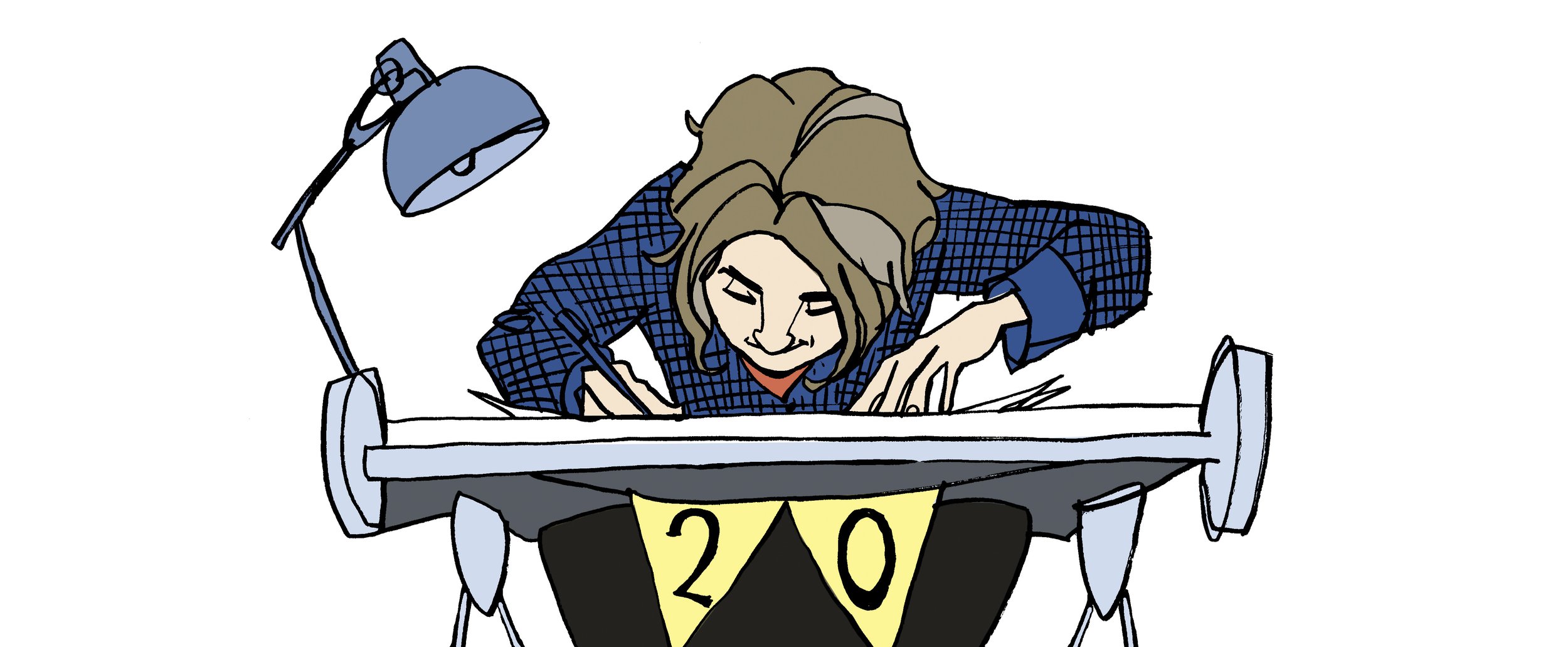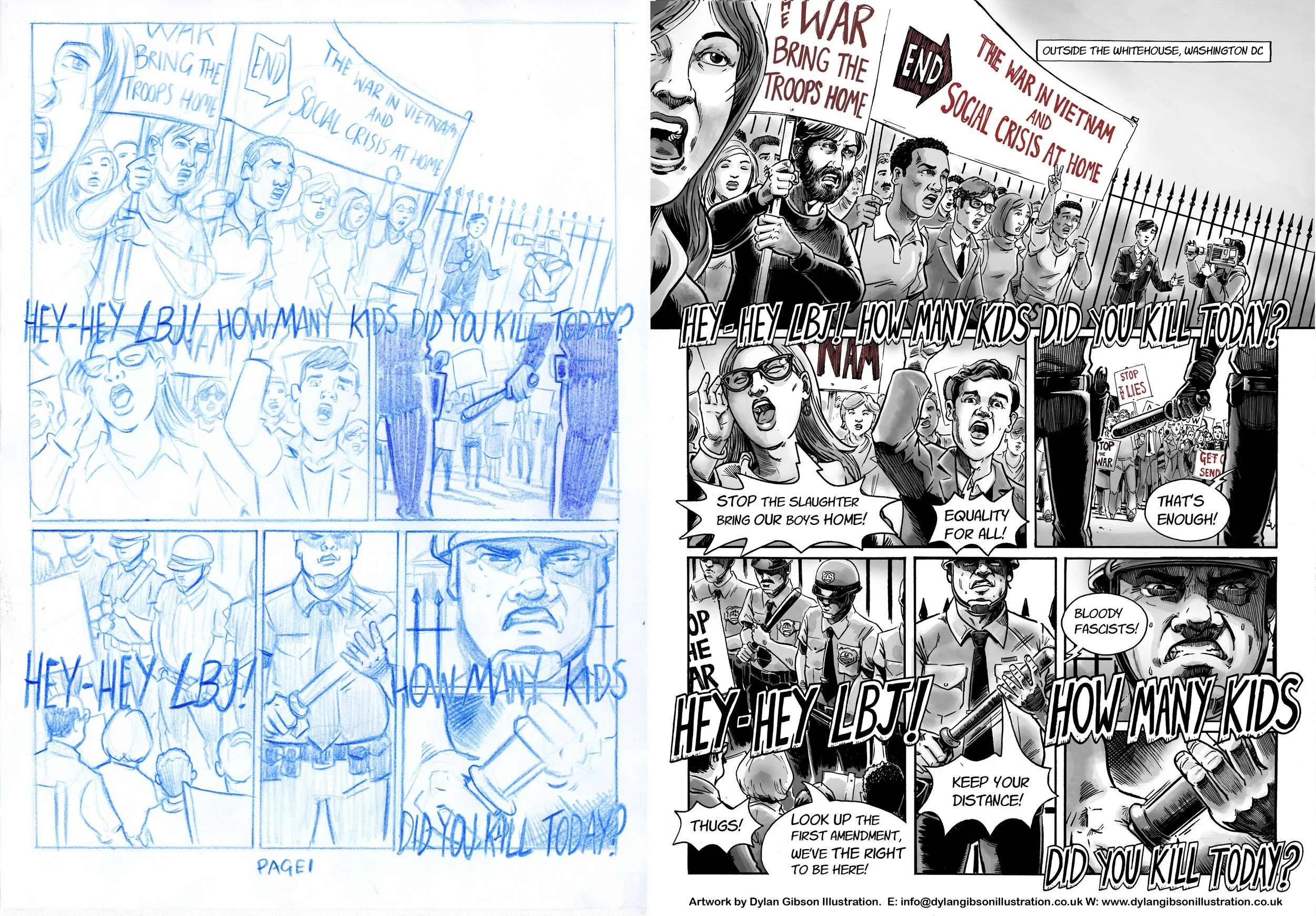Telling a captivating story with pictures is a love of mine and I’m always thrilled when I get a commission to create illustrations for a new visual narrative. The draft and finished page below has been taken from Goliath a story set in 1967 and the year 2000.
As much as I hate to admit it the year 2000 is now firmly in the past and this novel is essentially two period pieces within one story! So the look of both times needs researched and delving into the past to get the look and feel right can be it’s own time consuming rabbit hole if you let it. You get an immediate satisfaction if you get it right. I think the trick is not to pick out too many obvious examples from the period as this especially in the case of fashions can make the feel characteristic.
First I start by reading the story, I let it percolate a bit in my mind and play it out in my imagination like a film, thinking composition, point of view and pacing. I try to trust my intuition and find that if it feels easy to draft down on the page then I’m doing it right. After I might go back into it and do a little refinement before illustrating the final page.
I still draft my rough pages by hand and you can see I have a love for using colour pencils. This draft stays very close to the final page, you will see a little refinement here and there only. The finished art is hand drawn in pen & ink then scanned. I use a layer with textured paper to help soften the shade I add to give it a wash, water coloured feel which I think helps adds to the period look.
I used greyscale with some colour to highlight elements for the 1967 time period and used colour for the year 2000 parts of the story so the reader knows when exactly they are at a glance.


















